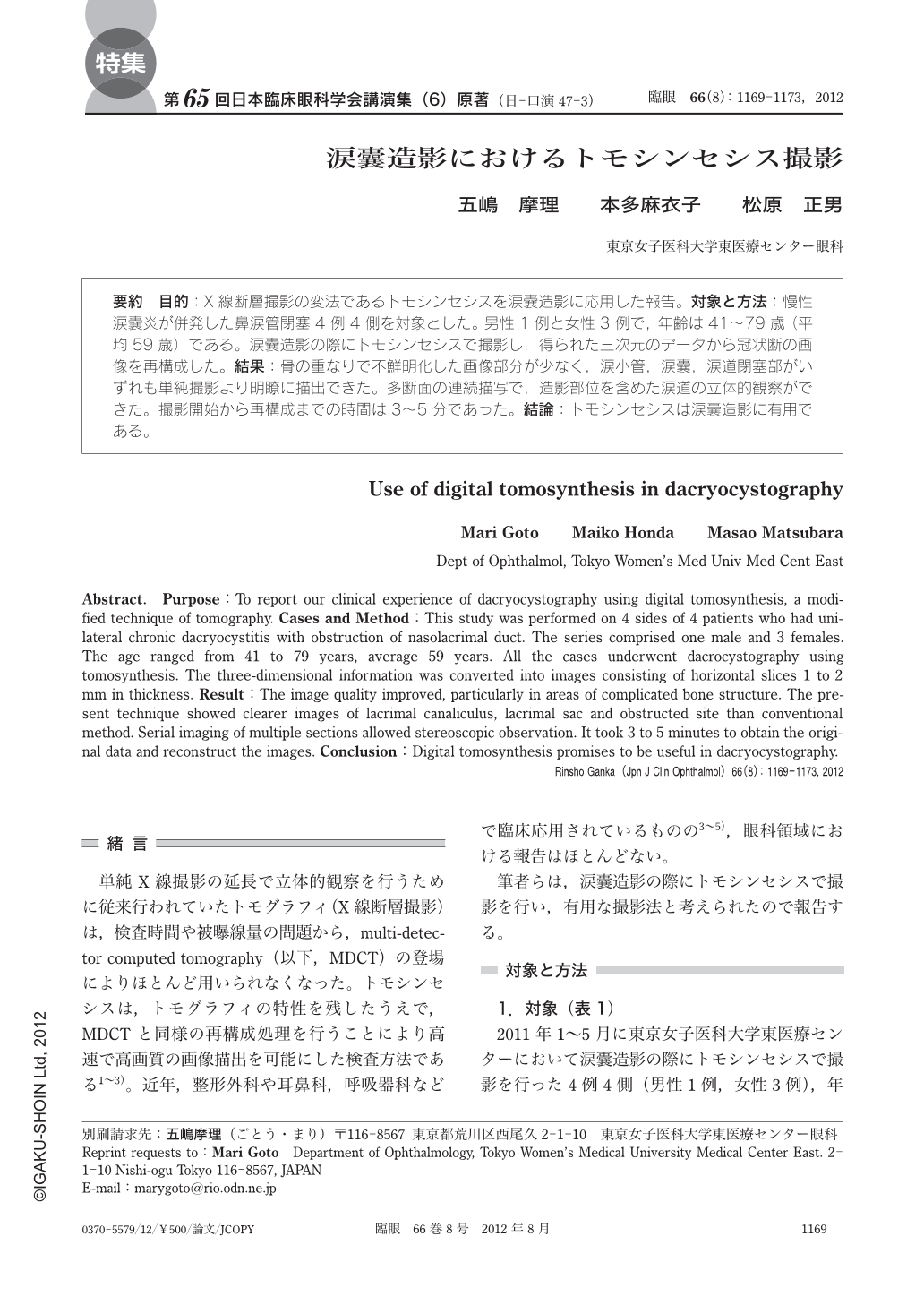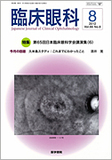Japanese
English
- 有料閲覧
- Abstract 文献概要
- 1ページ目 Look Inside
- 参考文献 Reference
要約 目的:X線断層撮影の変法であるトモシンセシスを涙囊造影に応用した報告。対象と方法:慢性涙囊炎が併発した鼻涙管閉塞4例4側を対象とした。男性1例と女性3例で,年齢は41~79歳(平均59歳)である。涙囊造影の際にトモシンセシスで撮影し,得られた三次元のデータから冠状断の画像を再構成した。結果:骨の重なりで不鮮明化した画像部分が少なく,涙小管,涙囊,涙道閉塞部がいずれも単純撮影より明瞭に描出できた。多断面の連続描写で,造影部位を含めた涙道の立体的観察ができた。撮影開始から再構成までの時間は3~5分であった。結論:トモシンセシスは涙囊造影に有用である。
Abstract. Purpose:To report our clinical experience of dacryocystography using digital tomosynthesis, a modified technique of tomography. Cases and Method:This study was performed on 4 sides of 4 patients who had unilateral chronic dacryocystitis with obstruction of nasolacrimal duct. The series comprised one male and 3 females. The age ranged from 41 to 79 years, average 59 years. All the cases underwent dacrocystography using tomosynthesis. The three-dimensional information was converted into images consisting of horizontal slices 1 to 2 mm in thickness. Result:The image quality improved, particularly in areas of complicated bone structure. The present technique showed clearer images of lacrimal canaliculus, lacrimal sac and obstructed site than conventional method. Serial imaging of multiple sections allowed stereoscopic observation. It took 3 to 5 minutes to obtain the original data and reconstruct the images. Conclusion:Digital tomosynthesis promises to be useful in dacryocystography.

Copyright © 2012, Igaku-Shoin Ltd. All rights reserved.


